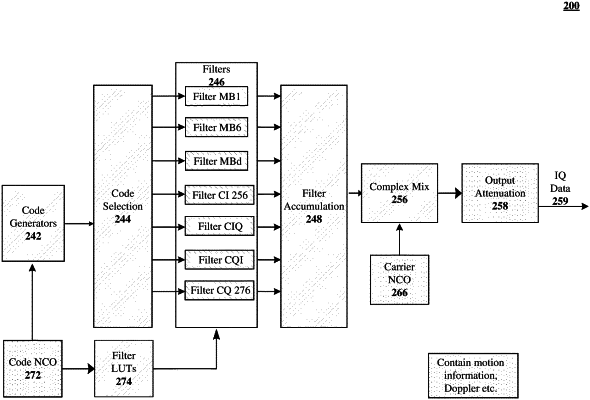| CPC G01S 19/23 (2013.01) [G01S 19/37 (2013.01)] | 21 Claims |

|
1. A method of preparing digital samples for synthesis of a radio frequency, abbreviated RF, signal encoded to simulate channels of Global Navigation Satellite System, abbreviated GNSS, satellites using a GPU card, instead of a field programmable gate array, abbreviated FPGA, including:
receiving a simulated position and velocity of a receiver antenna, for a simulation cycle, to which synthesized RF signals are to be broadcast;
dividing the simulation cycle into digital sample points that will be converted into the synthesized RF signals;
computing the digital sample points for the channels using a multiplicity of cores of the GPU card, including:
generating channel code values for the digital sample points as linear combinations of pseudo random sequences listed at least a first lookup table, abbreviated LUT, held in memory of the GPU card; and
combining the channel code values with data values for the digital sample points to create at least one multi-channel ordered sequence; and
sending the ordered sequence to a converter for conversion to a signal encoded to simulate the channels of the satellites in the GNSS.
|